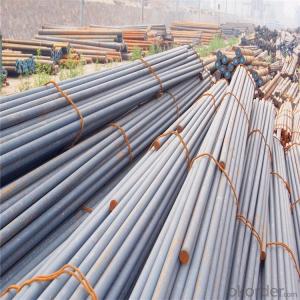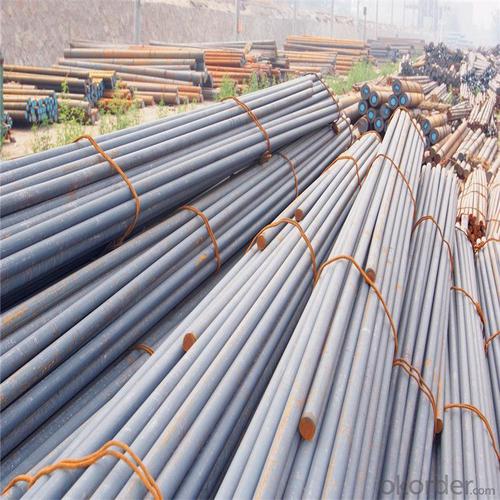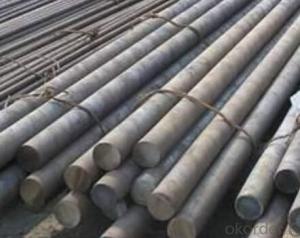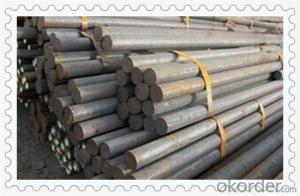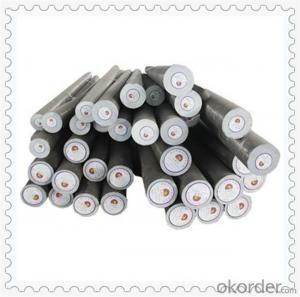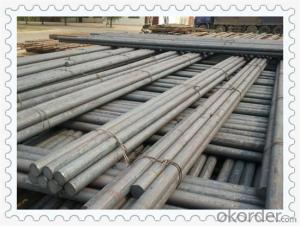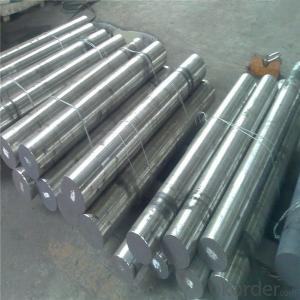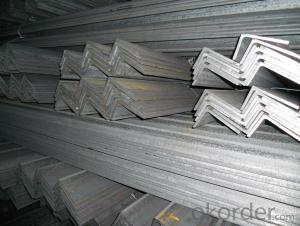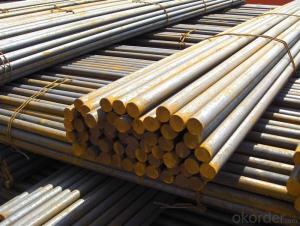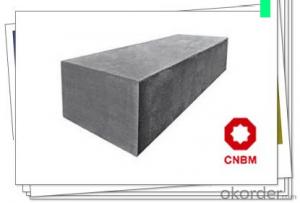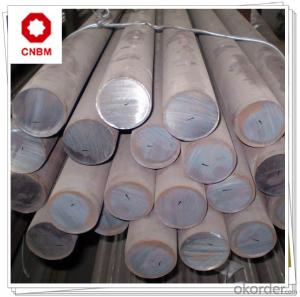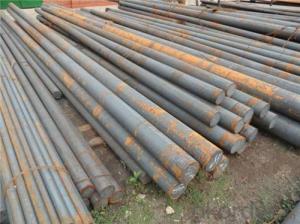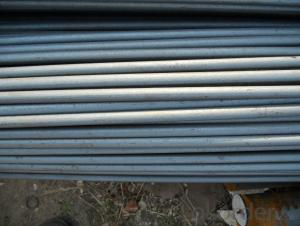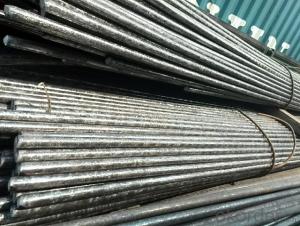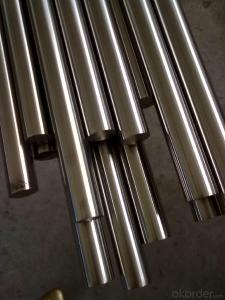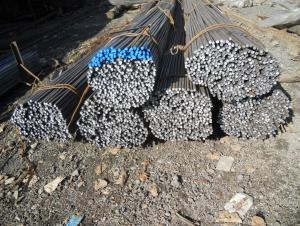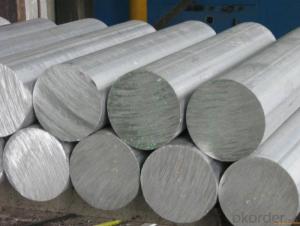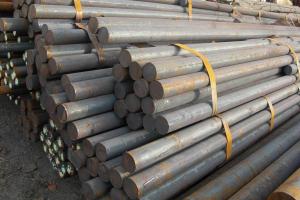Structural Steel Bar EN10025(93) S355J2G3
- Loading Port:
- Tianjin
- Payment Terms:
- TT OR LC
- Min Order Qty:
- 100 m.t.
- Supply Capability:
- 500000 m.t./month
OKorder Service Pledge
OKorder Financial Service
You Might Also Like
Specification
Structural Steel Bar EN10025(93) S355J2G3
Product Description of Structural Steel Bar EN10025(93) S355J2G3
1. Steel grade: ASTM4140, SCM440, 42CrMo, DIN1.7225
2. Length: 6M-12M
3. Diameter: 16mm-300mm
4. Product range: round bar, flat bar, square bar
5. Technique: Hot rolled, forged, cold drawn
Specification of Structural Steel Bar EN10025(93) S355J2G3
Material | SCM4140 | Round bar | Dia(mm) | 16-300mm |
Process | EAF + LF + VD + Forged + Heat Treatment (optional) | Length (mm) | Max 12m | |
Heat treatment | Normalized / Annealed / Quenched / tempered | Flat bar | Thickness(mm) | 8-500mm |
Delivery condition | Hot forged +Rough machined (black surface after Q/T)+ Turned (optional) | Width(mm) | 70-200mm | |
Test | Ultrasonic test according to SEP 1921-84 D/d | Length (mm) | Max 12m |
Chemical Composition of Structural Steel Bar EN10025(93) S355J2G3
C | Si | Mn | Cr | Mo | P | S |
0.38~0.43 | 0.15~0.35 | 0.75~1.00 | 0.8~1.1 | 0.15~0.25 | ≤0.035 | <0.04< td=""> |
Photo Show of Structural Steel Bar EN10025(93) S355J2G3
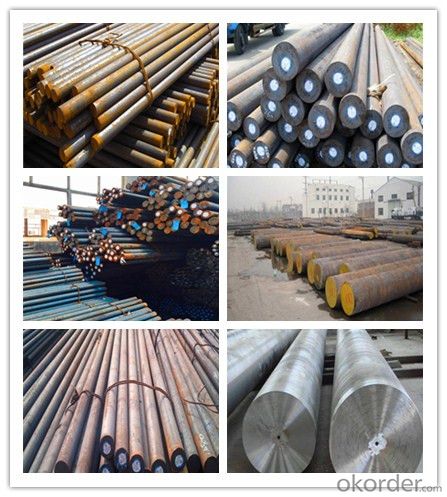
Packing and Delivery:
Packing in bundle package, or as customer's requirements.
Delivery Detail: 45 days after receiving the deposit.
Usage and Applications of Structural Steel Bar EN10025(93) S355J2G3
1. Steel round bar is used in a large number of architectural and engineering structures. Or it can be used in construction of plants for the production of steel house frames, high-voltage transmission towers, bridges, vehicles, boilers, containers, ships, etc.
2. And we can use this kind of product on the performance of the mechanical parts if the demand is not very high.
3. Some special material steel round bar can be used for main shaft of steamer, hummer shank, with big section and supper force.
Company Information
CNBM International Corporation is the most important trading platform of CNBM group.
Whith its advantages, CNBM International are mainly concentrate on Cement, Glass, Iron and Steel, Ceramics industries and devotes herself for supplying high qulity series of refractories as well as technical consultancies and logistics solutions.

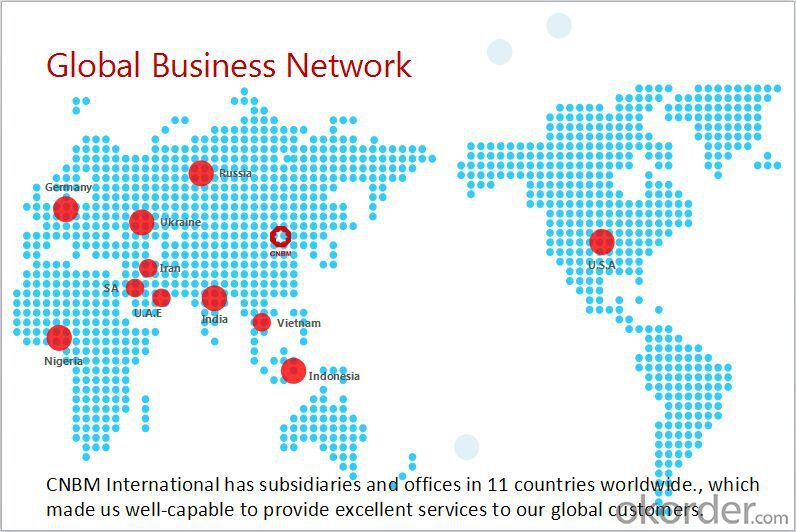
F A Q
1, Your advantages?
professional products inquiry, products knowledge train (for agents), smooth goods delivery, excellent customer solution proposale
2, Test & Certificate?
SGS test is available, customer inspection before shipping is welcome, third party inspection is no problem
3, Factory or Trading Company?
CNBM is a trading company but we have so many protocol factories and CNBM works as a trading department of these factories. Also CNBM is the holding company of many factories.
4, Payment Terms?
30% TT as deposit and 70% before delivery.
Irrevocable L/C at sight.
5, Trading Terms?
EXW, FOB, CIF, FFR, CNF
6, After-sale Service?
CNBM provides the services and support you need for every step of our cooperation. We're the business partner you can trust.
For any problem, please kindly contact us at any your convenient time.
We'll reply you in our first priority within 24 hours.
- Q: What are the advantages of using nickel-chromium-aluminum alloy steel round bars?
- Nickel-chromium-aluminum alloy steel round bars offer numerous benefits. Firstly, they possess exceptional corrosion resistance, making them ideal for use in harsh environments or industries where corrosion is a concern. This resistance to corrosion prolongs the lifespan of the round bars, reducing maintenance and replacement expenses. Secondly, these round bars are known for their high strength and durability, making them suitable for applications that involve heavy loads or high temperatures. Their strength also enhances structural stability, making them a dependable option for construction projects and industrial applications. Additionally, this alloy steel demonstrates excellent thermal stability, allowing it to maintain its shape and mechanical properties even under elevated temperatures. This attribute is particularly advantageous in industries such as aerospace, automotive, and power generation, where high temperatures are prevalent. Furthermore, nickel-chromium-aluminum alloy steel round bars offer good formability and machinability, facilitating easy fabrication and customization. This versatility allows for the production of intricate shapes and designs, making them adaptable for various manufacturing processes. Lastly, this alloy steel is recognized for its resistance to oxidation and scaling at high temperatures. This makes it suitable for applications involving exposure to extreme heat or rapid temperature changes, such as in furnaces or heat exchangers. In conclusion, the benefits of utilizing nickel-chromium-aluminum alloy steel round bars include exceptional corrosion resistance, high strength and durability, thermal stability, formability, and resistance to oxidation. These qualities make it a preferred choice for a wide range of industries, ensuring reliable performance and longevity in various applications.
- Q: How many roots are there in a standard ton of steel and how many meters are there in a steel bar?
- See more big steel bar, there is theoretical weight. After all, rebar is threaded, and round steel is also used.
- Q: What is the maximum silicon content allowed for steel round bars?
- The maximum silicon content allowed for steel round bars is typically around 0.35%.
- Q: How do you prevent warping during welding of steel round bars?
- To prevent warping when welding steel round bars, there are several precautions that can be taken: 1. Ensure proper fit-up: Before welding, make sure the round bars are correctly aligned and fitted together. Any gaps or misalignments can cause uneven heating and cooling, increasing the likelihood of warping. 2. Divide welding into smaller sections: Instead of continuously welding along the entire length of the round bar, break it down into multiple smaller sections. This will help distribute heat more evenly and decrease the risk of warping. 3. Use low heat input techniques: Employ welding techniques like pulse welding or tack welding that minimize heat input. These methods allow for controlled and intermittent heating, reducing the chances of warping. 4. Consider preheating: Preheating the round bars before welding can also prevent warping, especially with thicker bars or when welding dissimilar metals. Preheating helps minimize the temperature difference between the weld and the surrounding material, reducing the risk of warping. 5. Monitor and control heat input: Keep a close eye on the heat input during welding. Excessive heat can cause rapid expansion and contraction, leading to warping. Use appropriate welding parameters, such as lower amperage and shorter welding times, to control the heat input. 6. Utilize welding fixtures: Use welding fixtures or jigs to securely hold the round bars in place during welding. This helps maintain proper alignment and prevents movement, reducing the chance of warping. 7. Allow for natural cooling: After welding, let the round bars cool down slowly and naturally. Avoid rapid cooling methods like quenching, as they can induce stress and increase the risk of warping. By implementing these measures, the likelihood of warping when welding steel round bars can be significantly reduced, resulting in higher quality and more dependable welded joints.
- Q: Can steel round bars be used in the fabrication of machinery?
- Yes, steel round bars can be used in the fabrication of machinery. Steel round bars are often chosen for their high strength and durability, making them suitable for various applications in machinery fabrication. Additionally, their uniform shape and ease of machining make them versatile for use in different components and structures of machinery.
- Q: What are the different types of steel round bar surface finishes for corrosion resistance?
- Corrosion resistance in steel round bars can be achieved through various surface finishes. These finishes effectively shield the bar from corrosive elements, reducing the risk of rust or degradation over time. Hot-dip galvanizing is a popular choice for corrosion resistance. It entails immersing the steel round bar in molten zinc, which creates a protective zinc coating. This sacrificial anode corrodes before the steel, providing long-lasting protection against rust and corrosion. Stainless steel is another common surface finish for corrosion resistance. With a minimum chromium content of 10.5%, it forms a passive oxide layer when exposed to oxygen. This layer acts as a barrier, preventing further oxidation and corrosion, making stainless steel round bars highly resistant to rust. Electroplating is a method used to provide corrosion resistance. By immersing the bar in an electrolyte solution and passing an electric current through it, a layer of metal like zinc or nickel is deposited onto the surface, offering a protective coating. For steel round bars that require both corrosion resistance and aesthetic appeal, powder coating is a popular choice. This process involves applying a dry powder coating to the surface and curing it under heat. The resulting hard, durable finish not only offers excellent corrosion resistance but also provides a variety of color options. There are also specialized coatings available for specific applications, such as epoxy or polymer coatings. These coatings offer superior resistance to particular corrosive environments, like exposure to chemicals or high humidity. In conclusion, there are several types of surface finishes for corrosion resistance in steel round bars. These include hot-dip galvanizing, stainless steel, electroplating, powder coating, and specialized coatings. The choice of finish depends on factors such as the specific application, environmental conditions, and desired aesthetics.
- Q: What are the different types of steel round bar surface finishes used in the marine industry?
- In the marine industry, various surface finishes are commonly utilized for steel round bars. These finishes possess distinct characteristics and serve specific purposes, making them suitable for particular applications. The marine industry frequently employs the following steel round bar surface finishes: 1. Polished Finish: To achieve a polished finish, the surface of the steel round bar is ground until it becomes smooth and reflective. This finish is employed when aesthetics are important, as it provides an appealing and shiny appearance. Polished finishes are commonly used for decorative purposes on boat fittings, handrails, and other exposed areas. 2. Mill Finish: Mill finish refers to the surface condition of steel round bars when they are received from the mill without any additional treatment. This finish is characterized by a rough and dull appearance, as it is not intended to be visually pleasing. Mill finishes are typically utilized when a smooth or polished surface is unnecessary, such as in structural applications or when the material will be painted or coated. 3. Shot Blasted Finish: Shot blasting is a surface treatment process that involves propelling small steel shots at high velocity onto the surface of the round bar. This process eliminates surface impurities, scales, or rust, resulting in a clean and slightly textured finish. Shot blasted finishes are commonly used in marine applications where improved adhesion of coatings or paint is required, as the textured surface provides a better bonding surface. 4. Hot Rolled Finish: The hot rolled finish is attained by subjecting the steel round bar to high temperatures during the manufacturing process, followed by rapid cooling. This process creates a scaly surface with a rough texture. Hot rolled finishes are suitable for marine applications where corrosion resistance is not the primary concern and where the material will undergo further processing or coating. 5. Galvanized Finish: Galvanizing involves applying a protective zinc coating to the surface of the steel round bar. This finish offers excellent corrosion resistance, making it ideal for marine applications where the material will be exposed to saltwater or harsh environmental conditions. Galvanized finishes are commonly employed for boat trailers, marine hardware, and other components that require enhanced protection against corrosion. These are merely a few examples of the diverse steel round bar surface finishes used in the marine industry. Each finish possesses its own unique properties and advantages, allowing for a wide range of applications in the maritime sector. The choice of finish depends on factors such as aesthetics, corrosion resistance, coating compatibility, and the specific requirements of the marine application.
- Q: Can steel round bars be used in the production of musical instruments?
- Yes, steel round bars can be used in the production of musical instruments. Steel is a versatile material that offers a range of desirable properties such as strength, durability, and resonance. While wood is commonly used in the construction of musical instruments, steel can be employed in certain applications to enhance the instrument's sound and performance. Steel round bars can be utilized in the manufacturing of various components, such as keys or valves for wind instruments like saxophones or trumpets. These bars can also be used to create the internal support structures in instruments like guitars or cellos, providing stability and enhancing tonal qualities. Additionally, steel round bars can be used in the construction of percussion instruments such as steel drums or xylophones, where their strong and resonant properties are highly desirable. Overall, while steel is not as commonly used as wood in musical instrument production, it can certainly be employed in specific cases to achieve desired sound characteristics and structural integrity.
- Q: What is the hardness of a steel round bar?
- The hardness of a steel round bar may differ depending on the type of steel and the manufacturing process utilized. To measure the hardness of steel, the Rockwell hardness scale is commonly employed. This scale determines the depth of indentation caused by a specific load on a diamond or steel ball. Steel round bars generally exhibit hardness values ranging from approximately 20 to 60 Rockwell C (HRC), with higher values indicating greater hardness. However, it is crucial to acknowledge that the hardness of a steel round bar can also be affected by factors such as heat treatment, alloying elements, and any applied surface treatments. Consequently, it is imperative to refer to the manufacturer or supplier's specified hardness specifications to accurately ascertain the hardness of a steel round bar.
- Q: Are steel round bars suitable for conveyor belt applications?
- Depending on various factors, conveyor belt applications can benefit from the use of steel round bars. These bars are renowned for their strength, durability, and resistance to wear and tear, making them a viable choice for applications involving heavy loads, high speeds, or abrasive materials. One of the main advantages of utilizing steel round bars in conveyor belt applications lies in their ability to withstand heavy loads. Their strength ensures that the bars can support the weight of conveyed materials without bending or breaking. This is particularly crucial in industries where continuous transportation of large quantities of bulky or heavy materials is required. Moreover, steel round bars exhibit high resistance to wear and tear. The smooth surface of the bars reduces friction, resulting in minimal wear on the conveyor belt and prolonging its lifespan. This is especially important in applications where the conveyor belt constantly moves and comes into contact with abrasive materials, such as in the mining or construction industries. Additionally, steel round bars are capable of withstanding high speeds without compromising their structural integrity. Their high tensile strength enables them to handle the forces exerted on the conveyor belt during acceleration or deceleration. As a result, the conveyor system operates smoothly and efficiently, reducing downtime and enhancing productivity. However, it is crucial to consider the specific requirements of the conveyor belt application when selecting steel round bars. Factors such as the type of conveyed materials, the operating environment, and the specific load and speed requirements should be carefully evaluated. In certain cases, alternative materials or coatings may be necessary to enhance the performance and longevity of the conveyor system. In conclusion, steel round bars can be a suitable choice for conveyor belt applications due to their strength, durability, and resistance to wear and tear. Nonetheless, careful consideration of the specific application requirements is essential to ensure optimal performance and longevity of the conveyor system.
Send your message to us
Structural Steel Bar EN10025(93) S355J2G3
- Loading Port:
- Tianjin
- Payment Terms:
- TT OR LC
- Min Order Qty:
- 100 m.t.
- Supply Capability:
- 500000 m.t./month
OKorder Service Pledge
OKorder Financial Service
Similar products
Hot products
Hot Searches
Related keywords
